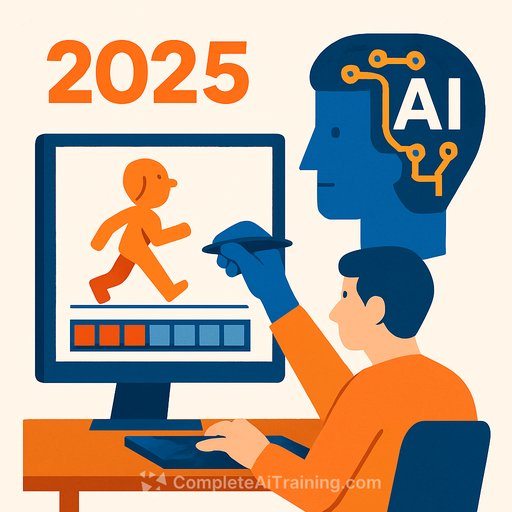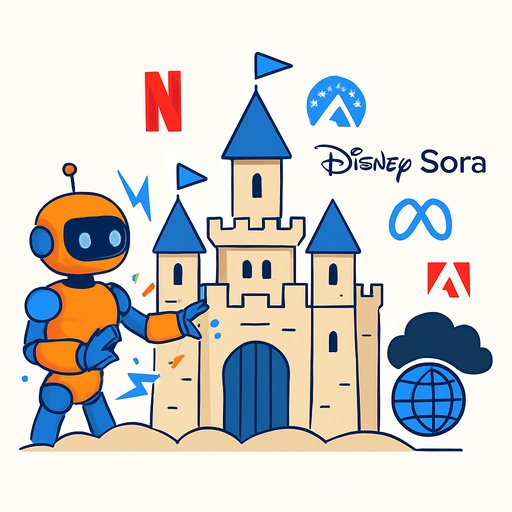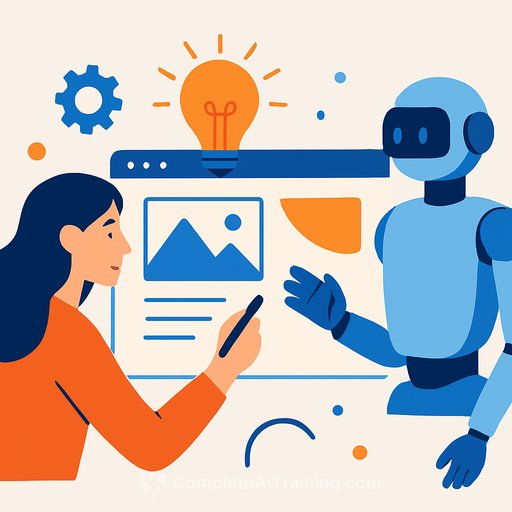Animation in 2025: "If AI Can Do It, Maybe It Wasn't That Original"
In 2025, animators face a creative upheaval unlike any since the jump from hand-drawn cells to digital frames. AI now generates entire sequences, mimics voices, and produces in minutes what took weeks before. Yet, the industry is still figuring out what this means for creativity and craft.
Bohdan Lysyk, CEO of an action animation studio, interviewed eight creatives working through this shift. Their conversations dug into identity, craftsmanship, and the uncomfortable question behind every AI-generated frame: if a machine can do my job, what’s my purpose?
AI’s Role Has Shifted From Tool to Co-Creator
Khalid Latif, global executive creative director at VML Health, sums it up: “AI isn’t just helping anymore. It’s right in the middle of creativity. A couple of years ago, it was a tool for repetitive tasks. Now, it feels like a strange creative partner.”
Dillah Zakbah, creative director at Uncommon Creative Studio, calls AI “the unpaid intern of animation.” It handles grunt work fast and at scale. They use it to prototype storyboards and animatics 10 times faster. AI isn’t perfect, but it speeds up testing ideas before client sign-off.
Executive producer Mat Delorenzi shares how AI cuts days or weeks from workflow. Tasks like creating decks, storyboards, rough animations, and style frames stay in-house now, reducing costs and boosting profits.
For one project, AI tools like Stable Diffusion, Midjourney, and GEN-2 created metaphorical visuals and futuristic sequences, even a 3D host. The ideas came from the team, but AI shaped them into extraordinary forms.
The Economics: Real Savings and Hidden Costs
Some studios report 5% to 30% savings in voiceover, sound design, and storyboarding. But the full picture is complex. At Analog, founders Mike Merron, Arvid Niklasson, and executive producer Federica Omodei say many AI models still overpromise and underdeliver. Some tasks are faster, but frustrations and wasted time balance things out. Overall cost impact is minimal.
Dillah warns about the myth that AI always means more efficiency. “Creative work thrives on inefficiency — the weird tangents, failed drafts, lunchtime chats that spark ideas. If AI turns creativity into a checklist, work risks becoming soulless and forgettable.”
The Client Reality Check: "Wait, Why Isn’t This Cheaper?"
Clients writing the checks have mixed feelings. Some understand they're buying ideas, not just tools, but many remain cautious. Mat says corporate clients worry about plagiarism and IP with generative AI.
This leads to a pricing paradox. AI may cut down pixel-pushing tasks, but editing, reviews, and revisions still take time. Plus, AI tools come with token and credit costs for each iteration.
Analog’s team notes a shift in project briefs. Clients and agencies now start with countless style frame variations, pushing imagery past what traditional studios can handle. Studios must become experts not just in AI tools, but in knowing when and why to apply them. It’s a chaotic moment with no clear winners — a true AI Cambrian Explosion.
The Great Democratization: How Everyone Became an “Animator”
Animation was once a gatekept field, requiring study and skill. Now, anyone can write a prompt, pay a subscription, and create animations. The psychological barrier is crumbling.
This opens the floodgates. Small businesses can produce content in hours that used to take a week. But a concerning trend is rising: aesthetic sameness. “A lot of AI animation looks like a fever dream — melty limbs, glitchy transitions, recycled styles. Just because you can make it doesn’t mean you should,” warns Dillah.
Job Market Chaos: Who Survives the Shuffle?
A new class of AI artists is emerging. To stand out, humans need taste — knowing what resonates and what unique value they add. Fundamentals like style, lighting, and character design remain crucial for guiding AI.
Traditional illustrators and motion designers stay relevant by sharpening art direction skills — managing style and storytelling through AI-generated work. But junior and mid-level creatives face the steepest challenges. “Knowing craft basics won’t be enough,” Mat says. “You’ll need to arrive as a one-person creative studio, fluent in multiple AI tools.”
Khalid advises using AI to clear obvious ideas quickly, freeing up space to push creativity further. His rule: “If AI can come up with it, it probably wasn’t that original. People notice when work has heart and care.”
AI-only work lacks soul, story, and style — the kind of work people scroll past. But blending classic animation skills with AI sparks originality and real storytelling.
The Resistance: “I Don’t Use Unethical AI”
Not everyone embraces AI. Mike Middleton, creative director, points out the harsh reality: job losses. Automation often deskills and lowers wages instead of helping displaced workers.
He challenges the idea that automation improves quality. Instead, it floods the internet with low-quality animation. Mike avoids unethical AI and companies that rely on it.
The Verdict: Adapt or Lose Your Edge — But Keep Your Soul
Studios are taking different paths. Some accept AI as a competitive advantage. Others brand themselves as fully AI-free. Some go all-in with 100% AI content. That’s animation in 2025 — where old rules no longer apply and new ones haven’t been written.
The uncomfortable question remains: if AI can instantly replicate your work, maybe creativity was just expensive pattern recognition. Yet, in a world flooded with instant visuals, connection matters most. The studios that last won’t be those with the best AI tools — they’ll be the ones who remember animation isn’t about pixels. It’s about the pulse beneath.
Your membership also unlocks:






